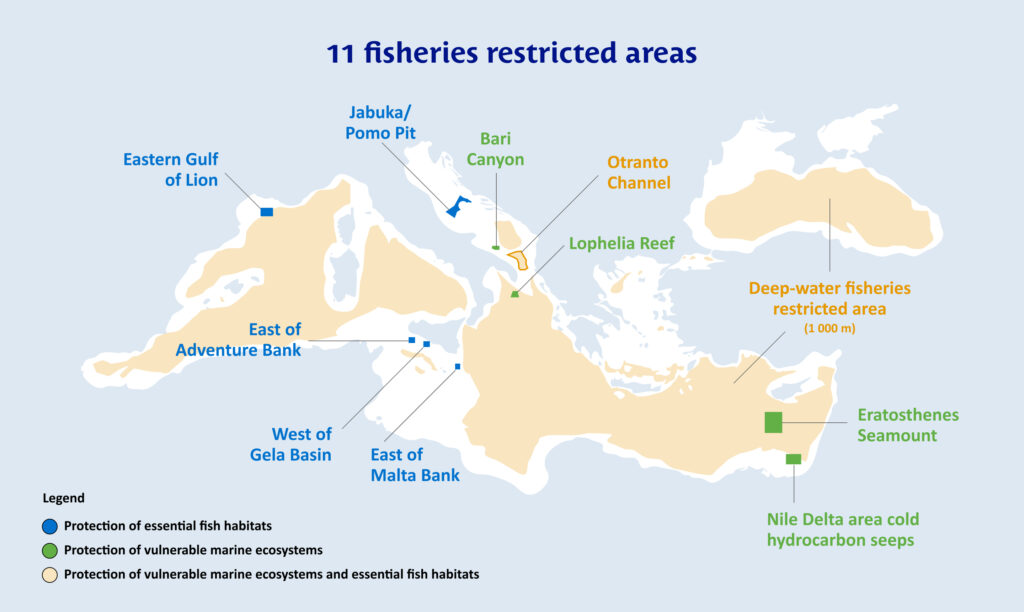In the videos below, Dr Sašo Gorjanc (Mediterranean case study) and Ginevra Capurso (Northern Adriatic case study) share the observed challenges and potential solutions of supporting both the fishing sector and the conservation of biodiversity in the Mediterranean.

Takeaways from the case studies
The Road to Policy Coherence in the Mediterranean
Governance
- Descriptor 6 of the Marine Strategy Framework Directive is meant to align fisheries and biodiversity rules, yet enforcement instruments remain scarce, and ministries continue to “speak different languages.” This fragmentation limits any real push toward joint biodiversity and fishery outcomes.
- France’s single implementation document, merging Marine Spatial Planning (MSP) and MSFD programmes of measures, demonstrates how consolidating mandates streamlines decision-making.
- Issue focused expert groups within the GFCM scientific committee, populated by nationally appointed members, provide a template for structured, cross-country dialogue that can translate science into coherent regulation.
- Stronger NGO participation is essential for transparency and compliance, ensuring that public interest goals are not lost amid competing sectoral priorities.
Available Tools
- While expanding Marine Protected Areas is important, the urgent need lies in making current MPAs more functional. Many lack funding, staffing, and enforcement capacity, and legal instruments to address infractions remain weak or inconsistent. Expansion must go hand‑in‑hand with improved effectiveness and ecological connectivity.
- When applied together, Marine Spatial Planning (MSP) and the Marine Strategy Framework Directive (MSFD) offer a powerful structure to balance biodiversity conservation with sustainable fishing. MSP can spatially identify zones for fishing, habitat protection, or ecological restoration, while also advancing broader sustainability goals like energy efficiency in fisheries. Crucially, these frameworks enable much‑needed cross‑sectoral dialogue, but this requires early and meaningful stakeholder engagement, which remains underdeveloped in many countries.
Stakeholder Engagement
- Meaningful dialogue with fishers works best when it comes from someone they know and trust. One-on-one conversations, especially by people within the community, help break down resistance and show fishers that their voices and knowledge are valued.
- While financial support is available for collaboration between fishers and conservation actors, applying for it often involves complex paperwork. Many managers spend more time on administration than on actual fieldwork, making it harder to turn good ideas into action.
These takeaways are extracted from the online workshop “Fisheries and Biodiversity Conservation: Is a Path to Policy Coherence in the Mediterranean Possible?” organised by s.Pro – Sustainable Projects founding SUBMARINER Network.
It brought together researchers, policymakers, and practitioners to explore the complex relationship between fisheries management and biodiversity conservation in the Mediterranean.
With a focus on achieving policy coherence, the session tackled the key challenges of balancing economic development with environmental protection. Participants gained insights into the EU policy framework, discussed findings from related projects, and examined regional case studies.